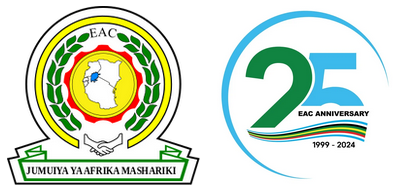Capital Markets - An Overview
Historical Background
The capital markets in the East African Community (EAC) date back to the 1950’s with the establishment of the Nairobi Stock Exchange (NSE) in 1954 in the then East African British Protectorate. The NSE was the stock exchange for the entire East African British Protectorate with listed companies from the present day Uganda, Kenya and Tanzania.
With the collapse of the EAC in 1977, the NSE remained a Kenyan outfit with all the non-Kenyan companies delisted and nationalised in their respective countries of Uganda and Tanzania. It was not until the 1990’s that Uganda and Tanzania established their own national stock exchanges; the Uganda Securities Exchange (USE) and the Dar es Saalam Stock Exchange (DSE) respectively.
Rwanda the other EAC Partner State, was later to follow with the Rwanda Stock Exchange (RSE) in 2011.
Burundi is the only EAC Partner State yet to establish a capital market but plans are already underway to develop a capital markets development framework that will pave the way for the establishment of a capital market in Burundi.
Snap Shot of the EAC Capital Markets
The EAC has four operational stock exchanges; the NSE, RSE, DSE, USE in Kenya, Rwanda, Tanzania and Uganda respectively. A total of 110 companies are listed on the four exchanges; 62 on the NSE, 9 on the RSE, 21 on the DSE and 18 on the USE. by the end of 2011, the four EAC stock exchanges commanded a combined equity market capitalisation of US$ 22 Billion for which NSE accounted for 55% with a market capitalisation of US$ 12 Billion.
In relation to the significance in their respective economies, the NSE equity market was most significant, accounting for 36% of Kenya’s Gross Domestic Product (GDP)
Market Infrastructure
There is a total of four (4) trading platforms in the EAC capital markets trading in both equity and fixed income securities; the NSE in Kenya, RSE in Rwanda, DSE in Tanzania, and USE in Uganda. The NSE and DSE are both automated while the USE and RSE are still manual using the open-outcry trading system. Unlike the other three Partner States, Uganda also has an Over-the- Counter-Market (OTC) for government bonds though the same bonds are also listed on the USE.
With respect to clearance and settlement of securities, all the four capital markets in the EAC have Central Securities Depositories (CSD).
In Uganda and Kenya there are two CSDs one for equities and bonds listed on the exchanges and one for government bonds. In the other two markets of Tanzania and Rwanda there is one CSD that clears and settles all securities government bonds and equities as well as corporate bonds listed on the exchanges. In terms of the trading and settlement cycle, all the markets have a T+3 settlement cycle with the exception of Rwanda that recently moved to a T+2 settlement cycle.
Legal and Regulatory Structure
All the four capital markets have similar laws governing the capital markets with few divergences arising out of mainly differences in the level of market development. The legal and regulatory framework in the EAC capital markets provides for trade in equity, fixed income securities, collective investment schemes as well as fund management services.
Kenya, Uganda and Tanzania are members of the International Organisation of Securities Commissions (IOSCO), the international body that sets standards and best practices in securities regulation. Kenya and Tanzania are already Appendix A signatories of the IOSCO Multi-Lateral Memorandum of Understanding (MMoU) on information sharing and cooperation amongst securities regulators while Uganda is still in Appendix B but working towards progressing to Appendix A. The three EAC Partner States; Kenya, Tanzania and Uganda have also undertaken a full self-assessment of their laws against the IOSCO principles of securities regulation and are currently in the process of amending their laws to fully comply to these principles. Rwanda though not yet a member of IOSCO, has developed its laws in compliance with the IOSCO principles and plans to lodge an application to become a member of IOSCO as well as Appendix A signatories of the IOSCO MMoU.
Regional Integration
Issues related to EAC capital markets integration are addressed by the EAC capital markets sub-committee under the Capital Markets Insurance and Pensions Committee (CMIPC). Nevertheless the EAC securities regulators and market participants have each formed regional associations to progress issues of capital markets integration; the East African Securities Regulatory Authorities (EASRA) for securities regulators and the East African Stock Exchanges Association (EASEA) for market participants. The work of EASRA and EASEA feeds into the overall EAC regional integration agenda through the CMIPC. The most outstanding achievement in terms of EAC capital markets integration so far has been the cross listing initiative that has made it possible for seven, five and three companies to cross list from the NSE to the USE, DSE and RSE respectively. A road map for the integration of the EAC capital markets has also been developed to guide the integration process in the EAC capital markets industry in light of the EAC Common Market Protocol and in preparation for the proposed East African Monetary Union.
